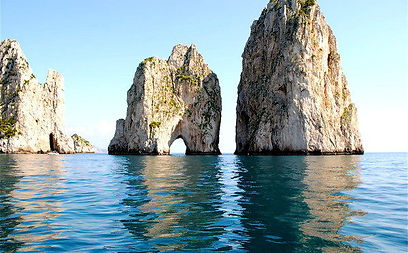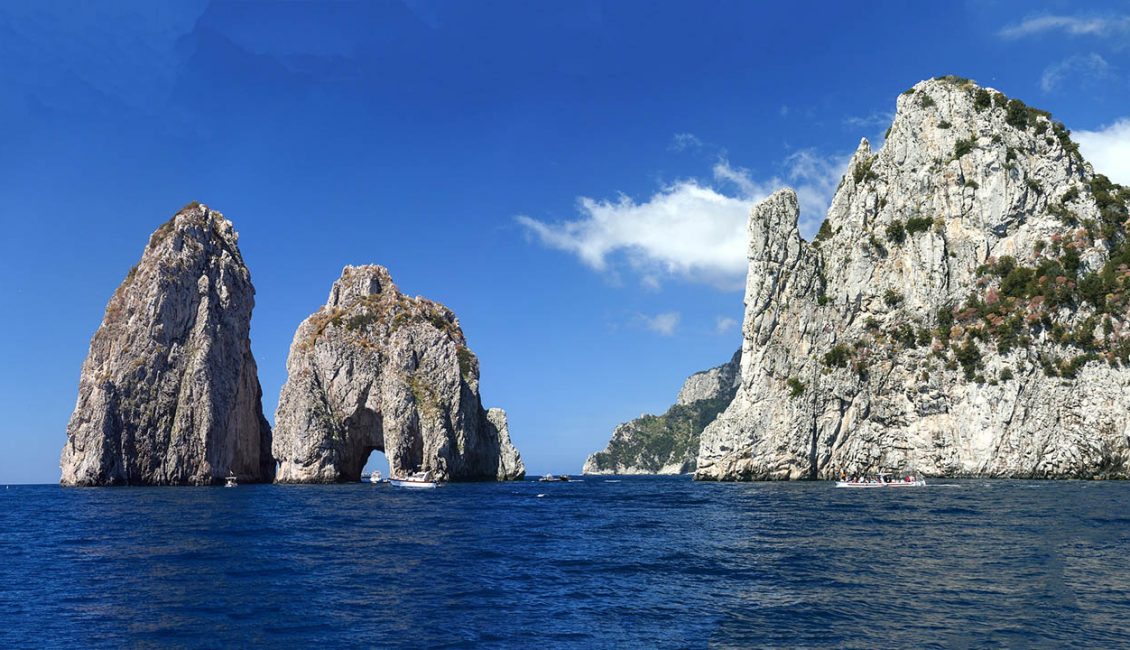The island is, unlike the nearby Ischia and Procida, of karst origin. Initially it was joined to the Sorrento peninsula, except to be subsequently submerged in part by the sea and then separated from the mainland, where today the Strait of Bocca Piccola is located.
Capri has a complex morphological structure, with medium height peaks ( Monte Solaro 589 m and Monte Tiberio 334 m) and vast internal highlands, among which the main one is called “Anacapri. It ranks 21st among the Italian islands in order of size.
The coast is indented with numerous caves and coves that alternate with steep cliffs. The caves, hidden under the cliffs, were used in Roman times as nymphaeums of the sumptuous villas that were built here during the Empire. The most famous is undoubtedly the Blue Grotto , where magical lighting effects were described by many writers and poets.
Characteristic of Capri are the famous Faraglioni , three small rocky islets not far from the shore that create a scenic and landscape effect; they have also been given names to distinguish them: Faraglione di terra (or Saetta) for the one attached to the mainland, Faraglione di Mezzo (or Stella) for the one placed between the other two and Faraglione di Fuori (or Scopolo) for the one furthest from the ‘island.
The island preserves numerous animal and vegetable species, some endemic and very rare, such as the blue lizard, which lives on one of the three Faraglioni. The vegetation is typically Mediterranean , with a prevalence of agaves , prickly pears and gorse. In Capri there are no longer any sources of drinking water and the water supply is guaranteed by underwater pipelines coming from the Sorrento peninsula. Electricity is supplied by a private company on site.
The municipalities in which the island is divided are Capri and Anacapri. The other most important inhabited centers are the hamlets of Capri Marina Grande and Marina Piccola.

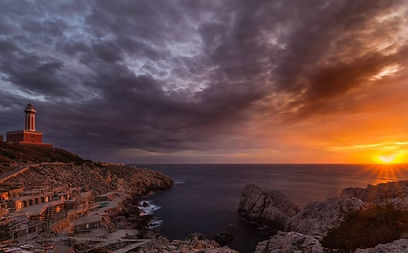
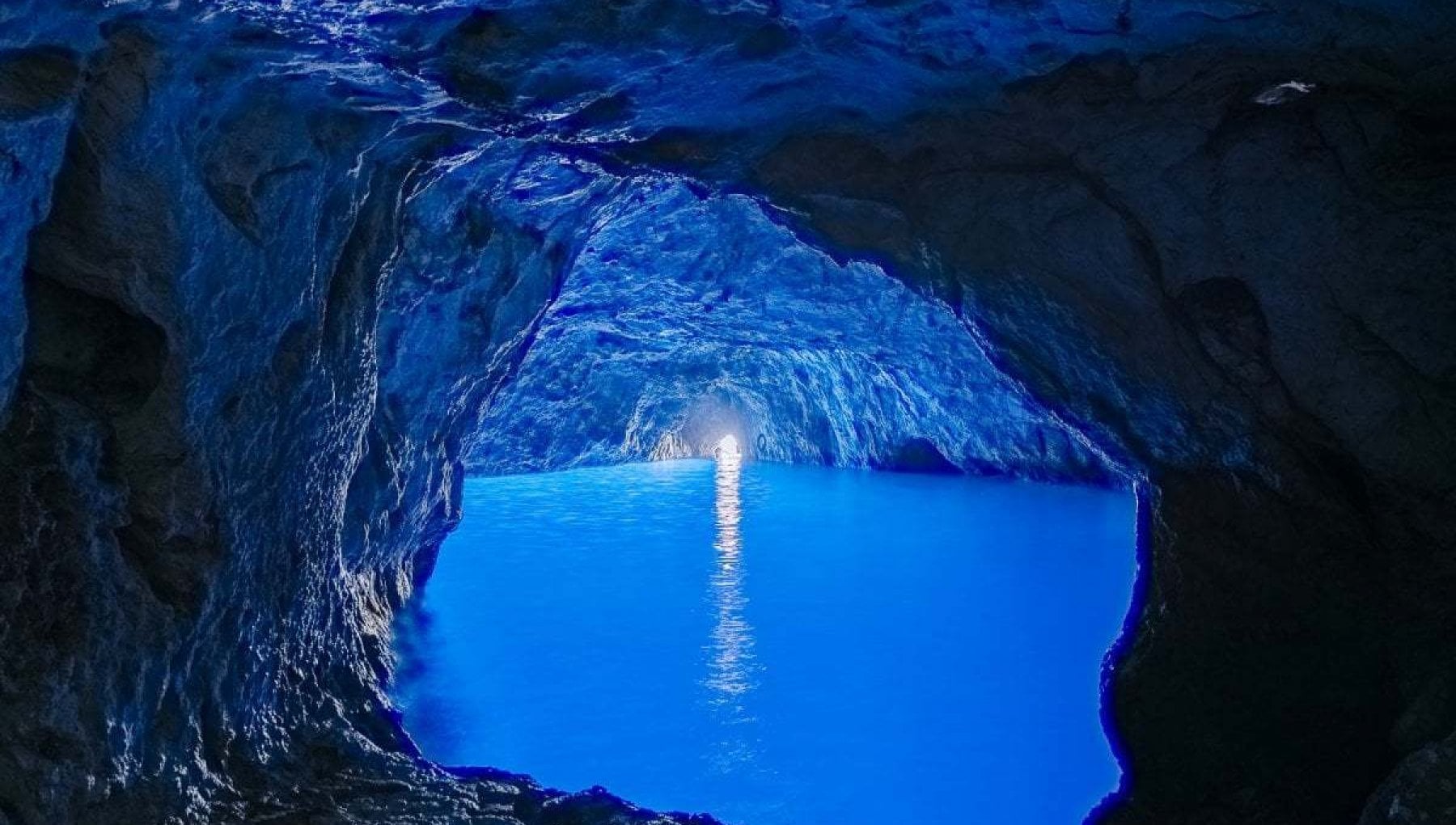
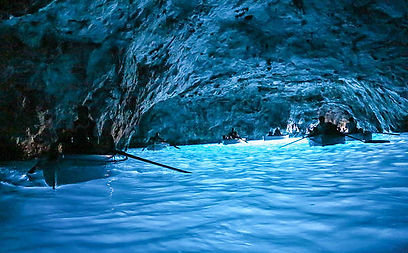
The Blue Grotto is a karst cavity that opens on the north-western side of the island of Capri. Administratively it belongs to the municipality of Anacapri, in the metropolitan city of Naples.
Prestigious nymphaeum of the Roman age, after a long decline the cave became known starting from 1826, when it was visited by the German artist August Kopisch.
The Blue Grotto has an opening partially submerged by the sea, from which the external light filters which – in this way – creates an intense blue color tone, which represents the peculiar feature of the cave.
The blue coloring of the cave is due to the presence of the underwater threshold (which opens exactly under the entrance) through which light penetrates. The underwater window acts as a filter, absorbing the red colors and letting the blue ones pass. Curious to note that, due to the phenomenon of total reflection, the threshold cannot illuminate the cave if the sea is completely calm – so there is need for a movement of the water, however minimal it may be. [18]
The silver-colored glare of the immersed objects, on the other hand, is attributable to another phenomenon: on the surface of the object several air bubbles adhere which, having a refractive index different from that of water, let the light come out. [18]
«Once inside, the immense extraordinary cave with its vault appears, and you can row all around, like under a dome. The light of the sun, which can enter it only through the opening under the water, refracts and darkens through the green water of the sea and magical apparitions emerge. All the high rocks at dusk are blue and greenish, almost like in the moonlight; however all angles and depths are clearly seen; the sea is illuminated and illuminated on one side and the other by the light of the sun, so that the black boat slides on the luminous surface; the color is a shining blue, the most beautiful I have seen, without shadows, without darkness, like a plate of the clearest frosted glass
These protrusions are identified with three distinct names: the first (joined to the mainland) is the Faraglione di Terra; the second, separated from the first by the sea, is that of Mezzo; while the third, reaching out towards the sea, is the Faraglione di Fuori. The latter is well known because it is the only habitat of the famous blue lizard.
The faraglioni are:
- Faraglione di Terra (or Stella), which is the only one still connected to the mainland, is the highest with its 109 meters;
- Faraglione di Mezzo (or Saetta), is the one in which there is the cavity in the center, a natural tunnel 60 meters long that crosses it entirely [4], reaches a height of 81 meters. The name may be attributed to a cult of the Madonna della Libera, also known as Stella Maris, to whom a fourteenth-century chapel on Mount Castiglione was dedicated.
- faraglione di Fuori (or Scopolo), that is promontory on the sea, which reaches a height of 104 meters. The famous blue lizard lives on this very faraglione.
